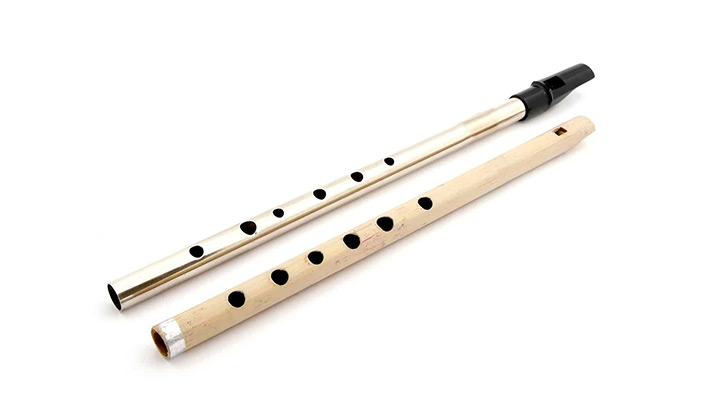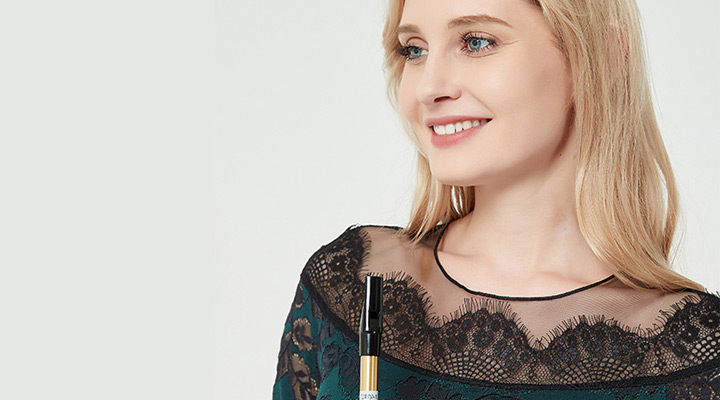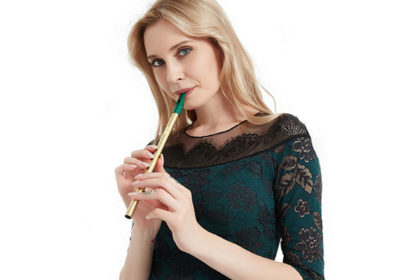What is the Irish Tin Whistle?

Small in stature but rich in sound the humble tin whistle has been a much loved instrument in Irish Traditional Music for over 100 years.
It would be hard to find a session anywhere in Ireland without one. It’s lilting sound blending effortlessly with flutes, fiddles and banjos alike.
Paddy Moloney who sadly passed away in 2020 was the charismatic bandleader of the ‘Chieftans’ for over 50 years. He famously sat front and centre of the band directing traffic with his humble whistle. His ability to use the instrument to soar over melodies gave this world famous group its distinctive sound.
The Irish word for the Tin Whistle or Penny Whistle as it is sometimes called ie the ‘Feadog Stain’. The outstanding Dublin musician Mary Bergin released her debut Album in 1979 simply called Feadog Stain. This recording more than any is credited with bringing the tin whistle firmly into the spotlight of traditional music.

Of course Recorders, Whistles and all their variations have been around since the middle ages but by far the most widely used in Ireland today is the Generation. It is instantly recognisable by its coloured tip or mouthpiece.
In the case of the Generation Whistle the coloured tip usually denotes the key of the instrument. Because the typical whistle you will hear in sessions only has 6 holes it is limited to 7 notes of the scale the most common whistle used is the ‘D’ or green coloured whistle.

Other popular keys keys include the ‘F’ and ‘B flat’ models. For a really high pitched sound the ‘F’ is recommended. This is normally red in colour, smaller than the regular D and can be more difficult to master.
You can listen to the audio and know more about the sound of the Irish Tin Whistle.
The B flat has a lower more breathy sound and is distinguishable by its blue mouthpiece and slightly larger size. This is also the sound that produced one of the most popular Irish ‘tunes’ of the 20th century “The Lonesome Boatman”. Let’s dig a little deeper into the history of this beautiful piece of music and its connection to the humble whistle.
The Furey’s were a popular Irish/Folk group in the 70”s with a string of hits to their name including the Lonesome Boatman. This all male group were steeped in traditonal music and Finbar the eldest was the main vocalist and frontman of the group much like Paddy Moloney was with the Chieftans.
Finbar was also an ‘All Ireland’ medal winner in both Tin Whistle and Uilleann Pipes. As the group toured the world Finbar often played The Lonesome Boatman [his own composition] on a low whistle made out of bamboo.
The story goes that this instrument after a gig in South Africa and he was destroyed and unable to repair it. Even though this great piece of music sounded great on the humble whistle Finbar always felt it sounded more atmospheric with slower sound.
With that in mind he hooked up with an English Jazz Musician and Flutemaker called Bernard Overton to create the Furey/Overton Flute.
Later Overton working on his own developed an A Flute made of Aluminium. Finbar asked Overton to make him one in G in order to play ’The Boatman’. He then asked for one to be made in D which became commonly known as the ‘Low D’ and used by such luminaries as Davy Spillane and the ‘Riverdance’ band.
What an interesting history the humble tin whistle has had?
From bone varieties believed to date back to the 2nd and 3rd Centuries to the Italian Flutes of the Middle Ages, the Flageolets found in 18th Century and the English Clarke Whistle [which my own grandfather played] to Riverdance.




